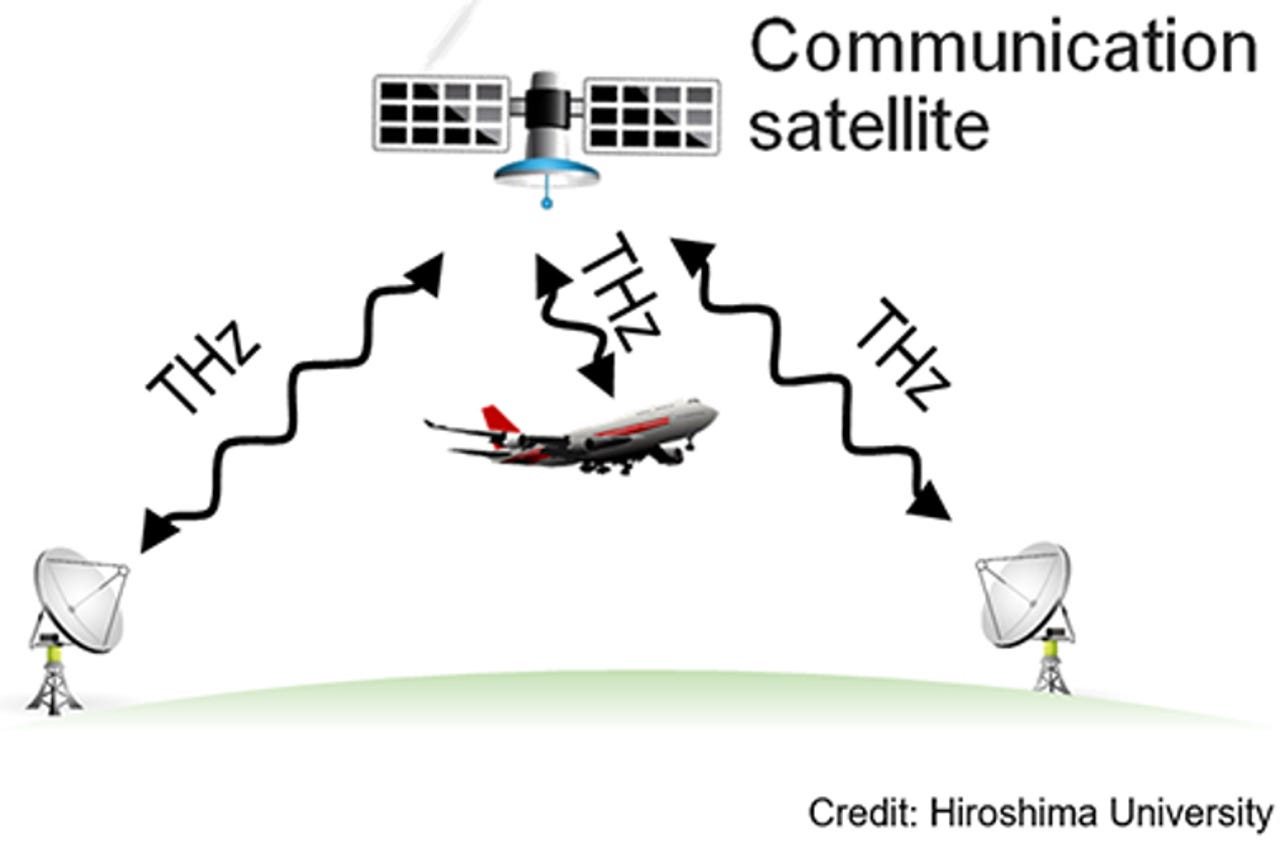Superfast broadband everywhere? Terahertz breakthrough could make satellite as fast as fiber


The breakthrough could allow for far faster speeds for in-flight network connections, and faster downloads to mobile devices.
A team of researchers from Japan have developed a terahertz transmitter that can send data at 100 gigabits a second over a single channel in the 300GHz band, showing promise that satellite links like the ones planned by Elon Musk's Space X could deliver fiber speeds.
Developed by researchers at Hiroshima University, the National Institute of Information and Communications Technology (NICT), and Panasonic, the technology is being shown this week at the IEEE's International Solid-State Circuits Conference in San Francisco.
Researchers have been eyeing terahertz radio to meet growing demand for higher speeds and larger bandwidths in wireless networks, which would operate at far higher frequencies than today's 5GHz or below wireless technologies.
"This year, we developed a transmitter with 10 times higher transmission power than the previous version's. This made the per-channel data rate above 100Gbps at 300GHz possible," said professor Minoru Fujishima, of the graduate school of advanced sciences of matter at Hiroshima University.
As NICT highlights, these speeds are about 10 times faster than what's expected on 5G networks due to come online in 2020. The breakthrough could allow for far faster speeds for in-flight network connections, faster downloads to mobile devices, and ultrafast wireless links between base stations.
Fujishima says ultrafast terahertz wireless would be better at supporting real-time applications, since it offers both high data rate and minimum latency, compared with higher-latency fiberoptics. At the same time, it can deliver fiber-like speeds.
The transmitter operated in the 290GHz to 315GHz frequency range, which is deemed a "vast frequency resource" and is currently unallocated.
It falls within the 275GHz to 450GHz range, which is to be discussed at the World Radiocommunication Conference (WRC) 2019 under the International Telecommunication Union Radiocommunication Section (ITU-R).
Last year the same group demonstrated a transmitter for the 275GHz to 305GHz range using "quadrature amplitude modulation" (QAM) to achieve 100Gbps speeds.
The reason 300GHz is called a terahertz transmission is because ITU's definition for terahertz frequencies span from 300GHz to 3THz, according to The Register.